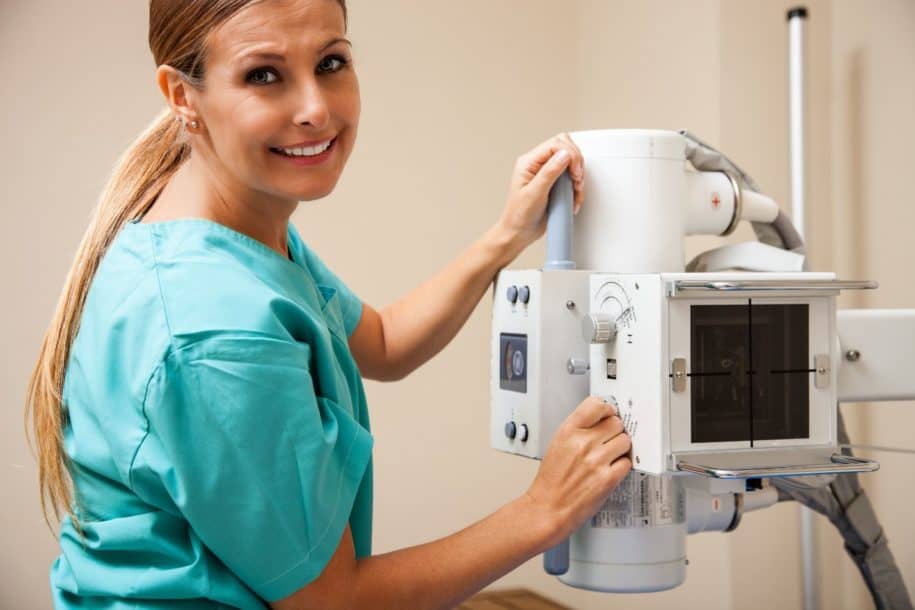The use of radioactive materials in the realms of scientific research and medicine is both widespread and extremely valuable. These materials, while useful, do come with a high degree of safety concerns and as such are subject to important, strictly enforced regulations. As there are many constantly moving parts in radiation safety management, safety professionals can benefit from the use of software designed to collect and correctly utilize critical information.
License & Permit Control
The first piece of the radiation safety management puzzle involves maintaining and organizing radiation licenses and permits. Many institutions, especially larger research organizations, may have dozens, if not hundreds, of permits on their license. As research or other work is constantly changing, the need exists for an efficient means of managing current permits, renewing or amending those permits, and accepting applications for new permits. A comprehensive radiation safety software suite will place control of all permit data directly in the hands of safety administrators. This includes the ability to accurately track permit expiration dates. With data saved securely to cloud servers, having a record of this information on hard copy paper or spreadsheet is a thing of the past.
RAM Order Management
Once users have been permitted to possess and use radioactive isotopes within the radiation safety management system, the true ‘cradle-to-grave’ management component begins. As all orders must be placed through the same software that manages permits, there is an automatic limitation of what type and quantity of isotopes can be ordered. Administrators no longer need to compare an order request against the user’s permits, eliminating yet another piece of manual legwork in the process.
Inventory Tracking
Radioactive materials received through the system’s ordering component are then instantly added to the institution’s electronic inventory. This is where some of the true real-time power of radiation safety management software comes into play. In addition to tracking what isotopes each authorized user possesses, the system also performs live calculations of isotope activity based upon pre-set half-lives of each licensed material. The result is a 100% live look at how much material is present at the institution at any given time. The system also accounts for decay against the user’s permit. This dictates the ordering of additional material based on permitted limitations, communicating whether disposal of current material would first be required.
Radioactive Material Disposal
The last step in the use and management of radioactive materials is safe and proper disposal. It is extremely critical that administrators maintain strict and accurate organization of all radioactive waste material that is generated by their institution. This includes both waste that is present with their end users, as well as waste that is stored for eventual offsite disposal or storage. A proper radiation safety management system will maintain information for both scenarios, while simultaneously tracking live isotope activity/decay and the calculation of that material against the license and permits of the institution. Most importantly, all this data is immediately available to administrators and can be exported for use in regulatory reporting.
The practice of managing radioactive materials at any institution involves a host of crucial, interactive pieces. The use of a comprehensive software suite can improve the accuracy and efficiency of such a program. Such a tool changes time spent by safety professionals and program administrators simply maintaining safety into time spent improving and expanding their safety program.
AUTHOR BIO

Joe comes to the SafetyStratus team with over 15 years of experience in the biological sciences and laboratory management and safety. At the University of Connecticut, and later at the University of the Sciences, Joe managed multiple high-volume biology teaching laboratories. He also worked as an Aquatic Biologist for the Philadelphia Water Department’s Office of Watersheds. Most recently Joe held the position of Laboratory Safety Manager in the University of the Sciences’ Environmental Health & Safety Department, overseeing all aspects of safety inspections and compliance in over 150 campus teaching and research spaces.
Originally from Connecticut, Joe has lived in the Philadelphia suburbs for the last 10 years. He holds a Bachelor of Science degree in Environmental Science and Biology from the University of Maine at Fort Kent. In his free time, Joe enjoys working out, taking in a good football game or movie, and traveling with his wife to sunny Caribbean destinations whenever possible.

